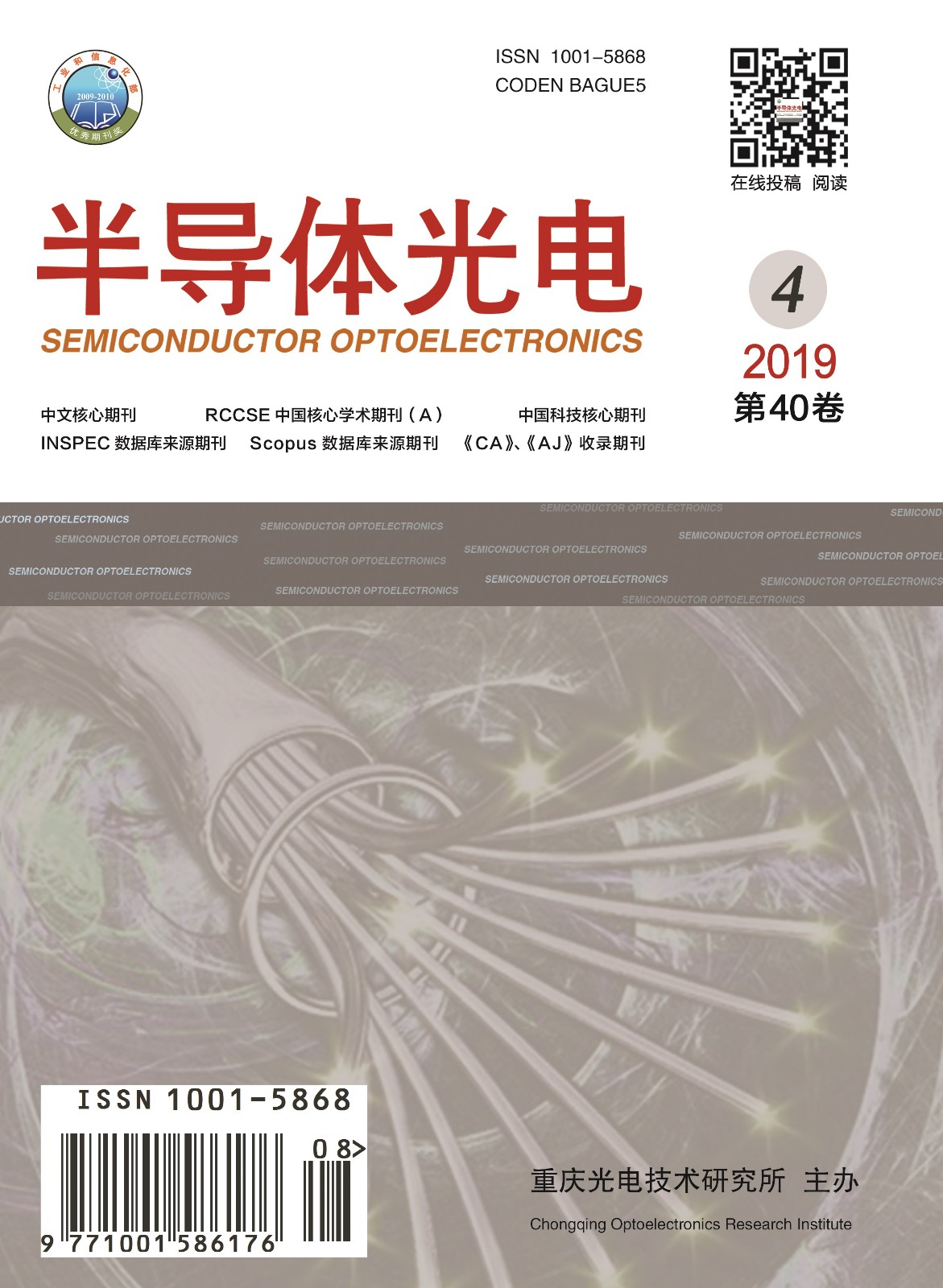Mo掺杂SnO2光电特性的第一性原理研究
[1] Xiong L B, Qin M C, Chen C, et al. Fully high-temperature-processed SnO2 as blocking layer and scaffold for efficient, stable, and hysteresis-free mesoporous perovskite solar cells[J]. Adv. Functional Mater., 2018, 28(10): 1706276.
[2] Lavanya N, Sekar C, Fazio E, et al. Development of a selective hydrogen leak sensor based on chemically doped SnO2 for automotive applications[J]. Inter. J. of Hydrogen Energy, 2017, 42(15): 10645-10655.
[3] Haddad N, Ayadi Z B, Mahdhi H, et al. Influence of fluorine doping on the microstructure, optical and electrical properties of SnO2 nanoparticles[J]. J. of Mater. Science: Materials in Electron., 2017, 28(20): 15457-15465.
[4] Ren X D, Yang D, Yang Z, et al. Solution-processed Nb∶SnO2 electron transport layer for efficient planar perovskite solar cells[J]. ACS Appl. Mater. Interfaces, 2017, 9(3): 2421-2429.
[5] Bai Y, Fang Y J, Deng Y H, et al. Low temperature solution-processed Sb∶SnO2 nanocrystals for efficient planar perovskite solar cells[J]. Chem. Sus. Chem., 2016, 9(18): 2686-2691.
[6] Muto Y, Nakatomi S, Oka N, et al. High-rate deposition of Ta-doped SnO2 films by reactive magnetron sputtering using a Sn-Ta metal-sintered target[J]. Thin Solid Films, 2012, 520(10): 3746-3750.
[7] Nguyen N M, Luu M Q, Nguyen M H, et al. Synthesis of tantalum-doped tin oxide thin films by magnetron sputtering for photovoltaic applications[J]. J. of Electronic Materials, 2017, 46(6): 3667-3673.
[8] He L N, Luan C N, Feng X J, et al. Effect of niobium doping on the structural, electrical and optical properties of epitaxial SnO2 films on MgF2 (110) substrates by MOCVD[J]. J. of Alloys and Compounds, 2018, 741: 677-681.
[9] Parthiban S, Elangovan E, Ramamurthi K, et al. Investigations on high visible to near infrared transparent and high mobility Mo doped In2O3 thin films prepared by spray pyrolysis technique[J]. Solar Energy Materials and Solar Cells, 2010, 94(3): 406-412.
[10] Slassi A. Ab initio study on the structural, electronic, optical and electrical properties of Mo-, Nb- and Ta-doped rutile SnO2[J]. Opt. Quant. Electron., 2016, 48: 160.
[11] Turgut G, Sonmez E. Synthesis and characterization of Mo doped SnO2 thin films with spray pyrolysis[J]. Superlattices and Microstructures, 2014, 69: 175-186.
[12] Huo X X, Jiang S L, Liu P, et al. Molybdenum and tungsten doped SnO2 transparent conductive thin films with broadband high transmittance between the visible and near-infrared regions[J]. Cryst. Eng. Comm, 2017, 19(30): 4413-4423.
[13] Zhao Y F, Liu Z X, Yang H Y, et al. Approach using the electrical structure and optical properties of aluminium-doped zinc oxide for solar cells[J]. RSC Adv., 2016, 6(112): 110943-110950.
[14] Chen C Z, Wen N Y, Chen H J, et al. Enhanced conductivity and high thermal stability of W-doped SnO2 based on first-principle calculations[J]. Brazilian J. of Physics, 2016, 47(1): 26-33.
[15] Segall M D, Lindan P J D, Probert M J, et al. First-principles simulation: ideas, illustrations and the CASTEP code[J]. J. of Physics: Condensed Matter, 2002, 14(11): 2717-2744.
[16] Perdew J P, Zunger A. Self-interaction correction to density-functional approximations for many-electron systems[J]. Phys. Rev. B, 1981, 23(10): 5048-5079.
[17] Kim K H, Lee S W, Shin D W, et al. Effect of antimony addition on electrical and optical properties of tin oxide film[J]. J. of the American Ceramic Society, 1994, 77(4): 915-921.
[18] Sorescu M, Diamandescu L, Tarabasanu-Mihaila D, et al. Nanocrystalline rhombohedral In2O3 synthesized by hydrothermal and postannealing pathways[J]. J. of Mater. Science, 2004, 39(2): 675-677.
[19] Zhou W, Liu L J, Yuan M Y, et al. Electronic and optical properties of W-doped SnO2 from first-principles calculations[J]. Computational Materials Science, 2012, 54: 109-114.
[20] Svane A, Antoncik E. Electronic structure of rutile SnO2, GeO2 and TeO2[J]. J. of Physics & Chemistry of Solids,1987, 48(2): 171-180.
[21] Behtash M, Joo P H, Nazir S, et al. Electronic structures and formation energies of pentavalent-ion-doped SnO2: First-principles hybrid functional calculations[J]. J. of Appl. Phys., 2015, 117(17): 15.
[22] Singh A K, Janotti A, Scheffler M, et al. Sources of electrical conductivity in SnO2[J]. Phys. Rev. Lett., 2008, 101(5): 055502.
许春辉, 杨平. Mo掺杂SnO2光电特性的第一性原理研究[J]. 半导体光电, 2019, 40(4): 534. XU Chunhui, YANG Ping. Study on Photoelectric Characteristics of Mo-doped SnO2 with First-Principles[J]. Semiconductor Optoelectronics, 2019, 40(4): 534.



